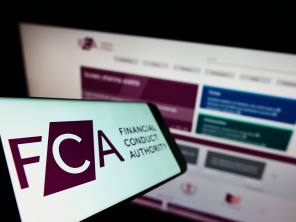

The £792m portfolio, which Mr Sheikh runs with James Elliot and Shrenick Shah, received praise in September when it was chosen as a replacement for Standard Life Investments’ flagship Global Absolute Return Strategies (Gars) fund on ratings agency FE’s Approved list.
At the time FE said the fund was “a lot more flexible than the big Gars machine”.
However, performance has dipped of late. While the fund has returned 26 per cent over three years, it has lost 1.5 per cent on a one-year basis, according to FE Analytics.
Mr Sheikh said that while the fund fared well immediately following the EU referendum due to a defensive positioning, it has lagged a recent bounce in markets because the team did not share other investors’ confidence on cyclicals.
But this has not convinced the team that the fund’s approach – which includes playing themes such as low inflation, US economic strength and Europe’s gradual growth recovery – requires an overhaul.
“We had a very good Brexit but, since then, we have struggled,” he said.
“That has led to an assessment of whether our macro view is correct – but by and large we haven’t really altered positions.
“We have seen a bounce in cyclicals. People have engaged in things that haven’t worked very well in recent years, like emerging markets and commodities.
“We are still a bit more sceptical about the sustainability of that.”
Instead of following this trend, the team has maintained a focus on companies with free cashflow and the ability to grow earnings in what Mr Sheikh dubbed “quite a dismal environment”, backing European telecoms firms and healthcare names.
The managers have also added to some North Asian technology names in the hope these could benefit from a move in microchip prices.
In another shift, the managers have joined the ranks of those taking a more cautious attitude to the fixed income space, bringing the fund’s duration down to roughly one year compared with a 2016 high of around three, while also exiting a long position in Australian government bonds.
“We thought it was a good trade but, looking at where valuations were, we wanted to book profits,” Mr Sheikh said on the latter.
More activity has come in the currency space, where the managers have backed both the US dollar and the Japanese yen.
“We are keeping a bias to the dollar,” Mr Sheikh said.
“One thing that’s still pretty clear is the US is the only growth game in town. That dollar position is something which has been with us for a prolonged period.
“It’s about 10 per cent [exposure] at the moment but it had a high of 40 per cent this year.”
This downward shift in the dollar weighting can be attributed to the team’s Japanese yen position, which has been building throughout 2016 and now represents 18 per cent of the fund, expressed partly using options.
“We have become a bit more bullish on the Japanese yen,” the manager said.
“That’s to do with our view that the Bank of Japan is, perhaps, running out of policy options.
“What happens when we reach the limits of quantitative easing?”



